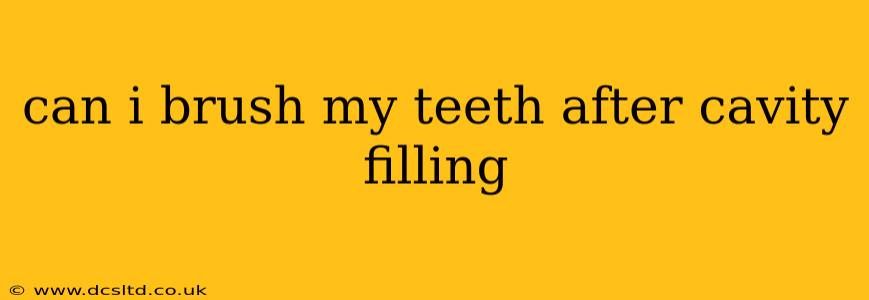Can I Brush My Teeth After a Cavity Filling?
Getting a cavity filled is a common dental procedure, and afterward, you'll likely have questions about your oral hygiene routine. One of the most frequent concerns is: Can I brush my teeth after a cavity filling? The short answer is yes, but with some important caveats. The way you brush, when you brush, and what you use to brush are all crucial factors in ensuring your filling heals properly and your teeth remain healthy.
When Can I Start Brushing After a Filling?
Generally, you can resume brushing your teeth a few hours after getting a filling. However, your dentist will provide specific instructions. They might recommend waiting a bit longer, especially if you've had a more complex procedure or if a local anesthetic is still affecting your mouth's sensitivity. Listen to your dentist's advice – they know your individual case best. Ignoring their recommendations could compromise the healing process.
How Should I Brush After a Filling?
Gentle brushing is key in the days immediately following a filling. Avoid aggressive scrubbing, as this can irritate the area around the filling and potentially dislodge it, especially in the initial healing period. Use a soft-bristled toothbrush and focus on gentle, circular motions.
What Kind of Toothpaste Should I Use?
You can generally use your regular toothpaste. However, if you experience any sensitivity, consider using a toothpaste specifically formulated for sensitive teeth. Avoid abrasive toothpastes that could scratch the filling or irritate the surrounding gums.
What About Flossing?
Flossing is also important, but be gentle around the filled tooth, especially in the first few days. Avoid aggressive flossing that could put undue pressure on the filling.
What if I Experience Pain or Sensitivity?
Some minor sensitivity is normal after a filling, but persistent or severe pain should be reported to your dentist immediately. This could indicate a problem with the filling or an underlying issue.
How Long Does it Take for a Filling to Fully Set?
Most fillings set relatively quickly, but it's recommended to avoid excessively chewing or biting on the filled tooth for at least 24 hours to allow it to fully cure. This helps to ensure the filling adheres properly and lasts longer.
What are the Long-Term Oral Hygiene Practices After a Filling?
After the initial healing period, maintaining excellent oral hygiene is crucial for the longevity of your filling and the overall health of your teeth. This includes:
- Brushing twice a day: Use a soft-bristled toothbrush and fluoride toothpaste.
- Flossing daily: This removes plaque and food particles from between your teeth, preventing cavities and gum disease.
- Regular dental checkups: See your dentist for routine checkups and cleanings to detect any potential problems early on.
By following these guidelines and maintaining a consistent oral hygiene routine, you can help ensure your cavity filling lasts for years to come and that your teeth remain healthy and strong. Remember, communication with your dentist is key – don't hesitate to ask questions if you have any concerns.
